Introduction : 10 Best Travelling Places in New Zealand :
New Zealand, with its breathtaking landscapes and unique blend of Maori and European cultures, stands as a haven for travel enthusiasts. 10 Best Travelling Places in New Zealand From the majestic fjords of Fiordland to the geothermal wonders of Rotorua, the country offers a diverse range of experiences. In this blog post, we’ll guide you through the 10 best traveling places in New Zealand, each with its own distinct charm and allure.
1. Fiordland National Park: A Symphony of Nature's Majesty :
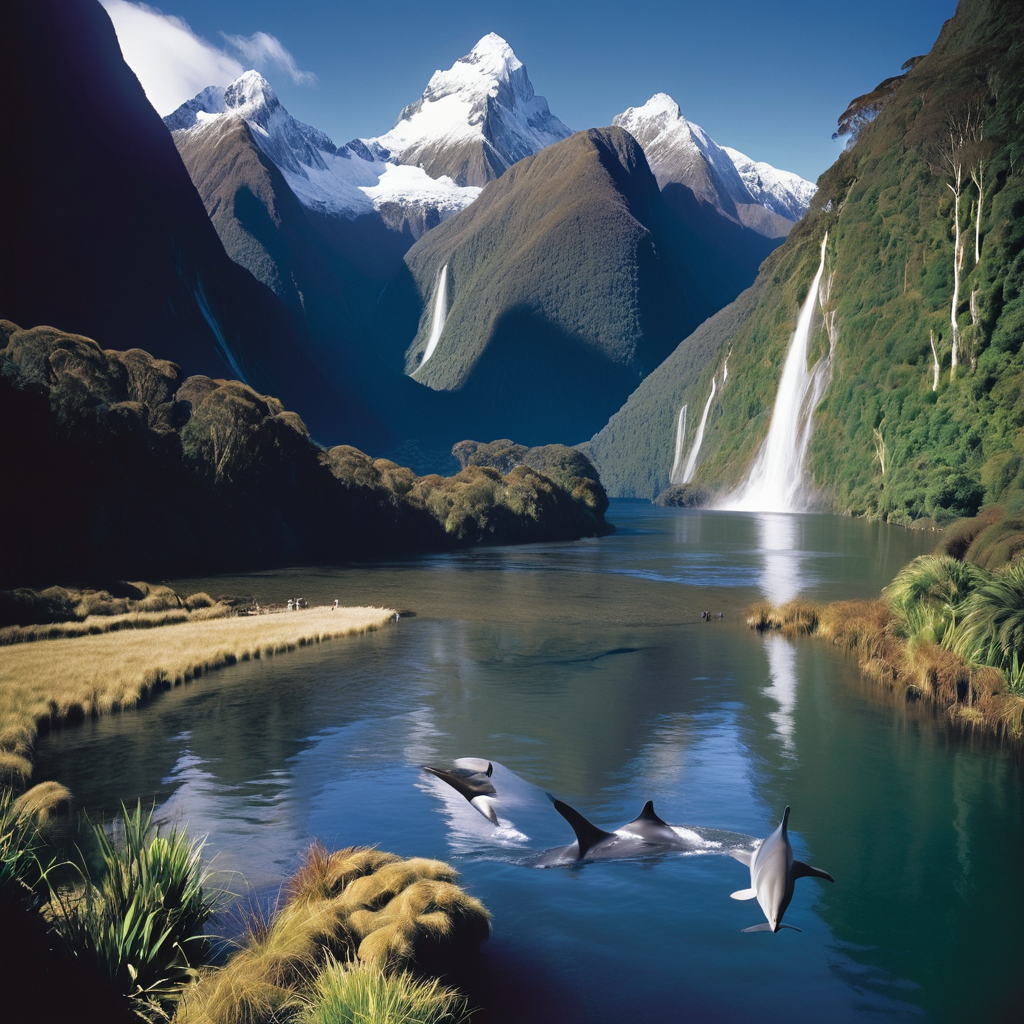
Fiordland National Park welcomes adventurers to a realm of towering peaks, pristine lakes, and cascading waterfalls. Milford Sound, a jewel within the park, unveils its grandeur through scenic boat cruises and encounters with playful dolphins and seals.
Fiordland National Park, located in the southwest corner of New Zealand’s South Island, is a breathtaking expanse of wilderness. Known for its dramatic landscapes, pristine waters, and diverse wildlife, Fiordland is one of the most picturesque and ecologically significant areas in the world. This guide explores the natural wonders, unique flora and fauna, and the array of activities that make Fiordland a symphony of nature’s majesty.
The Majestic Landscape
Fiords and Waterways
- Milford Sound/Piopiotahi: Perhaps the most famous fiord, Milford Sound is renowned for its towering Mitre Peak, lush rainforests, and cascading waterfalls such as Stirling and Bowen Falls.
- Doubtful Sound/Patea: Known as the “Sound of Silence,” Doubtful Sound is larger and less accessible than Milford, offering serene and remote beauty.
- Dusky Sound: One of the most complex and intricate fiord systems, Dusky Sound is a haven for marine life and bird species.
Mountains and Valleys
- Southern Alps: The park is dominated by the rugged Southern Alps, which provide a stunning backdrop to the fiords and valleys below.
- Hollyford Valley: A lush, forested valley that extends from the Southern Alps to the Tasman Sea, offering diverse ecosystems and spectacular scenery.
Flora and Fauna
Unique Ecosystems
- Rainforests: Fiordland’s temperate rainforests are rich in biodiversity, with ancient trees like rimu, kahikatea, and beech, as well as a plethora of ferns and mosses.
- Alpine Regions: Above the tree line, alpine plants such as the vibrant Mount Cook lily and various tussocks thrive in the harsh conditions.
Wildlife
- Birds: The park is home to several endangered bird species, including the flightless takahe, the kea (the world’s only alpine parrot), and the mohua (yellowhead).
- Marine Life: The fiords’ waters are inhabited by dolphins, seals, and the occasional whale, while the underwater environment is famous for black corals and diverse fish species.
Activities and Adventures
Hiking and Walking Trails
- Milford Track: Dubbed the “finest walk in the world,” this 53.5 km trail takes hikers through glaciated valleys, ancient rainforests, and past stunning waterfalls.
- Routeburn Track: A 32 km trail that traverses both Fiordland and Mount Aspiring National Parks, offering panoramic views of mountains, lakes, and valleys.
- Kepler Track: A circular 60 km trail that showcases the diverse landscapes of Fiordland, including lakes, forests, and alpine ridges.
Boating and Kayaking
- Fiord Cruises: Exploring the fiords by boat is a popular way to appreciate their grandeur, with many tours offering insights into the area’s natural and cultural history.
- Sea Kayaking: For a more intimate experience, kayaking allows visitors to navigate the tranquil waters of the fiords and encounter wildlife up close.
Scenic Flights
- Helicopter and Plane Tours: Aerial tours provide a unique perspective on Fiordland’s rugged terrain, revealing hidden lakes, remote valleys, and the sheer scale of the fiords.
Conservation Efforts
Protected Status
- World Heritage Site: Fiordland is part of the Te Wahipounamu World Heritage Area, recognized for its outstanding natural values and conservation significance.
Endangered Species Programs
- Takahe Recovery: Efforts to protect and increase the population of the takahe, a bird once thought extinct, have seen significant success in Fiordland.
- Pest Control: Intensive programs to control invasive species such as rats, stoats, and deer help preserve the native flora and fauna.
2. Rotorua: Where Nature Meets Maori Culture :
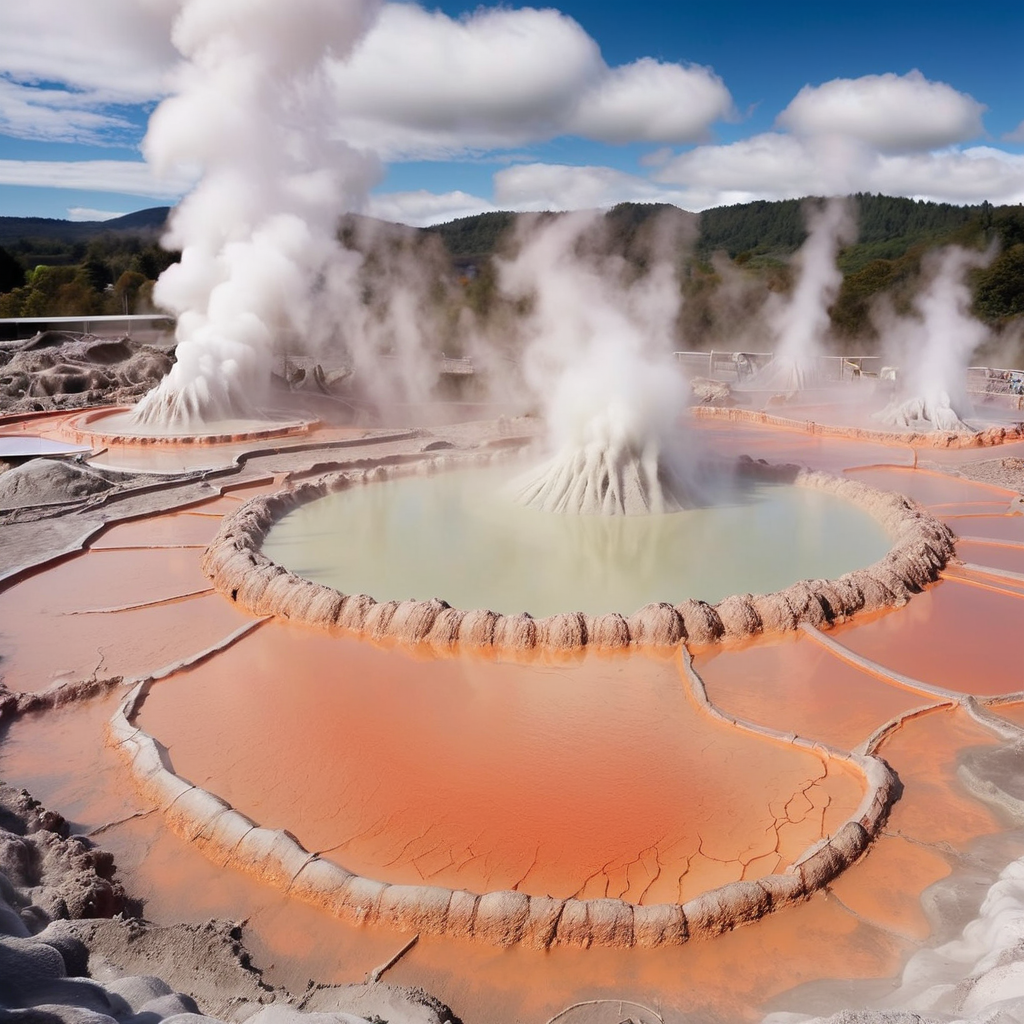
Welcome to Rotorua, where Mother Nature shows off and Maori culture comes alive! This place is like no other, packed with steamy geysers, bubbling mud pools, and warm, friendly folks ready to share their stories.
Immerse yourself in the geothermal wonders of Rotorua, located in the North Island. Witness bubbling mud pools, erupting geysers, and relax in natural hot springs. 10 Best Travelling Places in New Zealand. Beyond the thermal activity, Rotorua offers a cultural journey into the traditions of the Maori people, with captivating performances and visits to authentic Maori villages.
Rotorua, a geothermal wonderland nestled in the heart of New Zealand’s North Island, is a captivating destination where nature seamlessly intertwines with Maori culture. The landscape is dotted with bubbling mud pools, erupting geysers, and thermal springs, providing a unique and otherworldly experience. Beyond its geothermal wonders, Rotorua stands as a cultural hub, offering a deep immersion into the traditions of the Maori people. Visitors can witness powerful cultural performances, from the rhythmic haka to traditional dances, providing insight into the rich heritage of the indigenous Maori.
Welcome to Rotorua, where Mother Nature shows off and Maori culture comes alive! This place is like no other, packed with steamy geysers, bubbling mud pools, and warm, friendly folks ready to share their stories.
The Land of Steam and Magic
First up, you’ll notice the smell. That’s the sulfur – Rotorua’s signature scent! The town is a geothermal wonderland, full of steaming vents and hot springs. It’s like the Earth decided to let off a little steam and create a natural spa for everyone to enjoy.
Wander through Te Puia, and watch geysers shoot water high into the sky. Don’t forget to snap a pic at Pohutu Geyser – it’s a showstopper! And those mud pools? They’re like nature’s own cauldrons, bubbling away with a life of their own.
Dive into Maori Culture
Rotorua isn’t just about stunning sights; it’s also a cultural treasure trove. The Maori people have called this place home for centuries, and they’re eager to share their rich heritage.
Join a hangi feast – it’s not just a meal, it’s an experience! Food is cooked underground, and the taste? Unbelievable. While you’re there, catch a traditional haka performance. The powerful dance will give you goosebumps and a new appreciation for the Maori warriors’ spirit.
Adventure Around Every Corner
Feeling adventurous? Rotorua’s got you covered. Hit the trails for some epic mountain biking. The Redwoods Forest has tracks for everyone, from newbies to pros. Or, take a thrilling ride on the Skyline Luge – part go-kart, part toboggan, all fun!
For a chill day, take a dip in one of the many hot springs. Polynesian Spa is a top pick. Soak in the warm waters and let your worries melt away.
Nature’s Playground
Rotorua’s natural beauty doesn’t stop at geothermal wonders. Explore the serene Lake Rotorua or head to Whakarewarewa Forest for a walk among towering redwoods. The views are breathtaking, and the air? Crisp and fresh. Perfect for recharging your batteries.
The Heart of New Zealand’s Spirit
In Rotorua, every corner tells a story. From the steaming grounds of Wai-O-Tapu to the welcoming smiles of the Maori people, it’s a place where the past and present blend seamlessly. You’ll leave with your heart full and a head full of unforgettable memories.
So pack your bags and get ready for an adventure of a lifetime. Rotorua’s waiting to show you its wonders and warmth.
3. Queenstown: The Adventure Capital of the World :
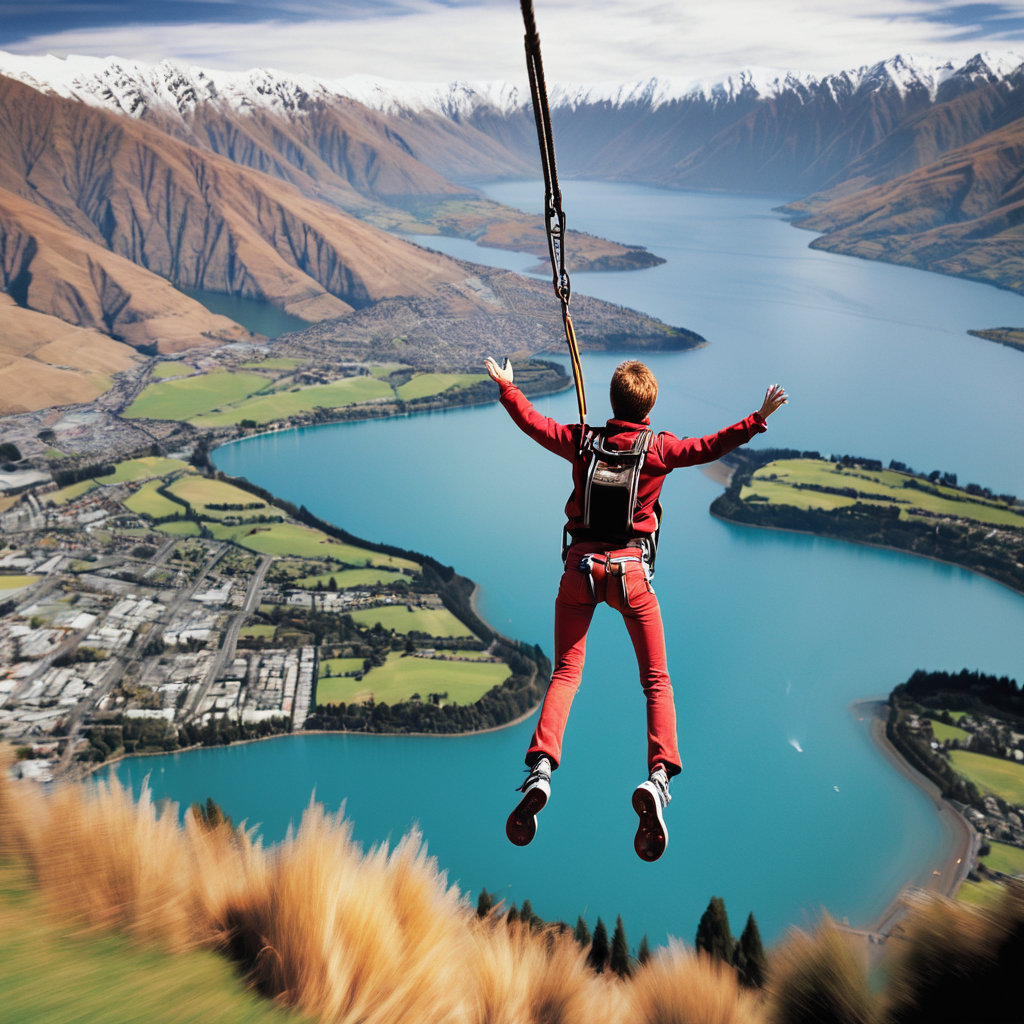
For adrenaline junkies, Queenstown on the South Island is a playground of excitement. Bungee jumping, skydiving, and jet boating await those seeking a thrill, all set against the backdrop of stunning Lake Wakatipu and the surrounding mountain ranges. Queenstown, on the South Island, lives up to its title as the “Adventure Capital of the World. 10 Best Travelling Places in New Zealand. Adrenaline junkies can indulge in activities like bungee jumping and jet boating, all set against the stunning backdrop of Lake Wakatipu and majestic mountain ranges.10 Best Travelling Places in New Zealand
Thrills and Spills
If you crave heart-pounding action, Queenstown’s got your back. Ever tried bungee jumping? Leap off the Kawarau Bridge and feel the rush! Not your thing? How about skydiving? Soar high above the stunning landscapes and feel like you’re flying.
For those who love water, take a spin on a jet boat in the Shotover River. Hang on tight as you zoom through canyons and over rapids. And don’t miss out on white-water rafting – it’s an adrenaline-pumping adventure down roaring rivers.
Sky-High Fun
Queenstown’s not just about thrills on land and water. Up in the sky, the fun continues. Try paragliding off Bob’s Peak. Glide smoothly and take in the breathtaking views of the town and lakes below. Or, hop into a helicopter for a scenic flight – the snowy peaks and turquoise waters are a sight to behold.
Winter Wonderland
When winter rolls around, Queenstown transforms into a snowy playground. Hit the slopes at The Remarkables or Coronet Peak. Whether you’re a seasoned skier or a beginner snowboarder, there’s something for everyone. And after a day on the slopes, cozy up with some hot cocoa and enjoy the après-ski vibes.
Natural Beauty
Even if you’re not an adrenaline junkie, Queenstown’s natural beauty will steal your heart. Stroll along the shores of Lake Wakatipu and watch the sunset paint the sky. Hike through Queenstown Hill for panoramic views that’ll leave you speechless. The town’s surrounded by incredible landscapes just begging to be explored.
Food and Fun
After a day of adventure, you’ll need to refuel. Queenstown’s got a fantastic food scene. Grab a famous Fergburger – trust us, it’s worth the hype! Or, dine by the lake and savor fresh, local cuisine. Don’t forget to check out the lively bars and enjoy a night out with new friends.
Memories to Last a Lifetime
Queenstown’s more than just a place – it’s an experience. From daring adventures to peaceful moments in nature, it’s a destination that leaves a mark on your soul. So pack your bags and bring your sense of adventure. Queenstown’s waiting to show you the time of your life!
Ready for the adventure of a lifetime? Queenstown’s calling your name. Let’s go!
Queenstown’s surrounding mountain ranges provide a stunning backdrop for activities such as paragliding and heli-skiing. Beyond the adrenaline rush, the town exudes a laid-back charm, with vibrant streets lined with cafes, shops, and a lively atmosphere. The combination of adventure and natural beauty makes Queenstown a must-visit destination for those seeking an unforgettable New Zealand experience.
4. Abel Tasman National Park: Coastal Paradise
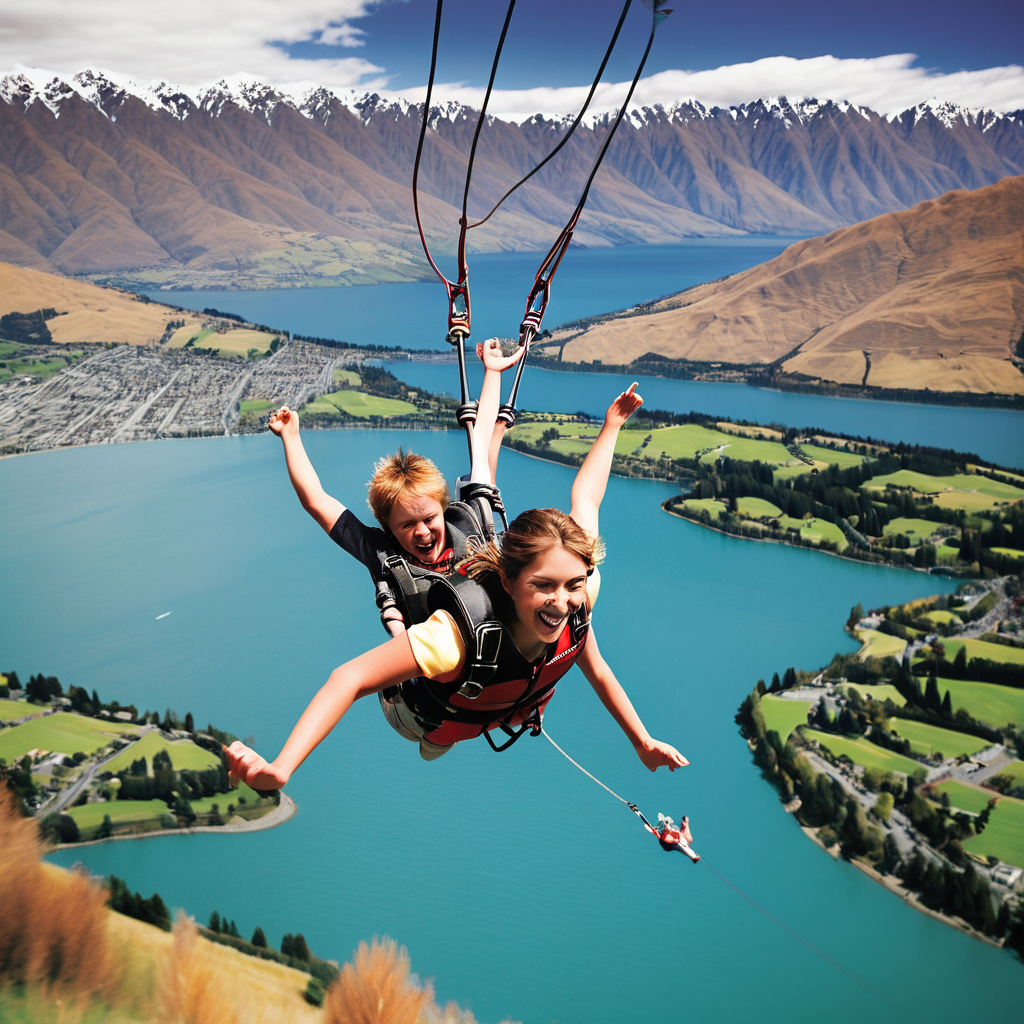
Welcome to Abel Tasman National Park, a slice of coastal heaven in New Zealand. With its golden beaches, lush forests, and sparkling waters, it’s a place that captures the heart and soul of nature lovers everywhere.
In the northern reaches of the South Island lies Abel Tasman National Park, a coastal haven boasting golden beaches, crystal-clear waters, and lush forests. Whether hiking along the Abel Tasman Coast Track or kayaking in serene waters, this park is a nature lover’s paradise. In the northern South Island, 10 Best Travelling Places in New Zealand. Abel Tasman National Park beckons with golden beaches, crystal-clear waters, and lush forests.
Abel Tasman National Park, situated in the northern reaches of New Zealand’s South Island, stands as a coastal paradise that captivates with its unparalleled beauty. This pristine sanctuary boasts golden beaches lapped by crystal-clear waters, creating a picturesque landscape that seems almost untouched by time.
The Abel Tasman Coast Track, a renowned hiking trail, winds its way through lush forests, revealing hidden coves and stunning viewpoints along the way. Visitors can embark on kayaking adventures, exploring hidden bays and encountering the playful antics of seals. The park’s tranquility and natural splendor provide a perfect escape, allowing travelers to connect with nature while basking in the warm glow of the New Zealand sun. 10 Best Travelling Places in New Zealand
Whether you’re seeking serenity along the shores or an active exploration of the coastal wonders, Abel Tasman National Park stands as an idyllic retreat and a testament to the untouched beauty of Aotearoa’s coastline.
Sandy Shores and Crystal Waters
First things first, the beaches! Abel Tasman boasts some of the most stunning beaches you’ll ever set foot on. Kaiteriteri Beach is a gem with its golden sands and clear blue waters – perfect for a lazy day soaking up the sun. Torrent Bay and Anchorage Beach are just as dreamy, inviting you to kick back and relax.
Adventures Await
But don’t think it’s all about lounging around. Abel Tasman is packed with adventures! How about a kayak trip along the coast? Paddle through the calm waters, explore hidden coves, and maybe even spot a seal or two. For land lovers, the Abel Tasman Coast Track is a must-do. This 60-kilometer trail winds through lush forests, along clifftops, and past beautiful bays. You can tackle the whole thing or just pick a section for a day hike – either way, you’re in for a treat.
Wildlife Wonders
Speaking of seals, Abel Tasman is a wildlife wonderland. Keep your eyes peeled for playful seals lounging on the rocks or frolicking in the waves. And don’t forget the birdlife – the park is a haven for native birds like the tui and kererū. If you’re lucky, you might even spot a little blue penguin!
Hidden Gems
While the beaches and trails get most of the attention, there are plenty of hidden gems to discover. Check out Cleopatra’s Pool, a natural rock pool with a fun waterslide. Or visit Falls River Swing Bridge for a bit of an adventure – the views from the bridge are worth the slight wobble!
Relax and Recharge
After a day of exploring, nothing beats relaxing under the stars. There are some fantastic campsites and lodges in the park where you can unwind and soak in the natural beauty. Imagine drifting off to sleep with the sound of the waves as your lullaby – pure bliss.
A Place to Remember
Abel Tasman National Park is more than just a pretty place; it’s a coastal paradise that stays with you long after you leave. From its sunny shores to its lush, green trails, it’s a destination that promises adventure, relaxation, and unforgettable memories.
So pack your bags, grab your sunscreen, and get ready to fall in love with Abel Tasman National Park. This coastal paradise is waiting to share its magic with you
5. Aoraki/Mount Cook National Park: Majestic Peaks and Glacial Beauty :
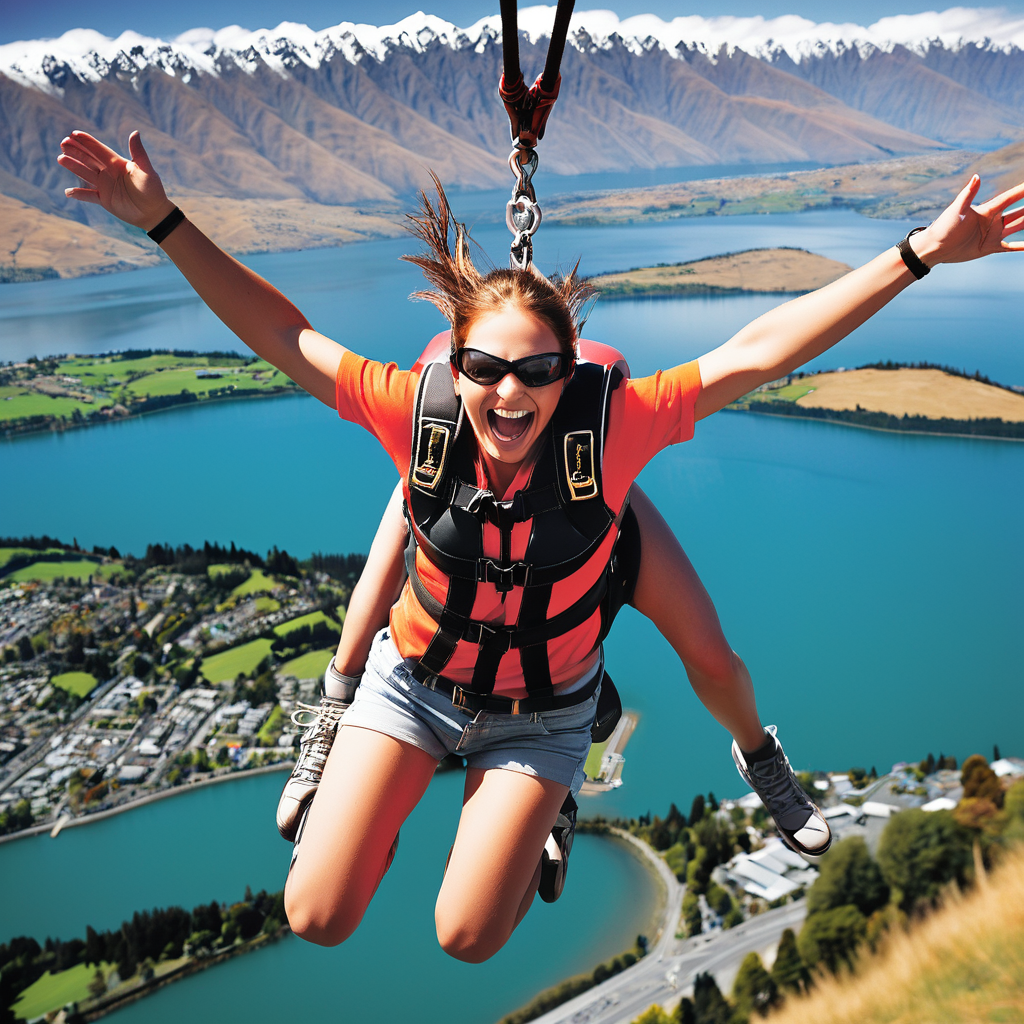
Discover the awe-inspiring beauty of New Zealand’s highest peak at Aoraki/Mount Cook National Park. Hikers can explore alpine landscapes, glaciers, and the iconic Tasman Lake, creating an unforgettable experience in the heart of the Southern Alps. Home to New Zealand’s highest peak, Aoraki/Mount Cook National Park boasts awe-inspiring alpine landscapes and glaciers. 10 Best Travelling Places in New Zealand.10 Best Travelling Places in New Zealand
Aoraki/Mount Cook National Park stands as a testament to New Zealand’s unparalleled alpine beauty.
Home to the country’s highest peak, Aoraki/Mount Cook, the park beckons adventurers and nature enthusiasts alike. Towering snow-capped peaks, pristine glaciers, and turquoise-hued lakes create a landscape that feels almost otherworldly. Hikers can traverse well-maintained trails that lead to breathtaking viewpoints, offering unparalleled vistas of the surrounding mountains and the iconic Tasman Glacier.
The glacial beauty is further accentuated by the mesmerizing Tasman Lake, where icebergs gracefully float against a backdrop of rugged mountain terrain. Aoraki/Mount Cook National Park is not merely a destination; it’s an immersive experience that allows visitors to witness the raw power and serene elegance of New Zealand’s alpine wilderness.
| Heading | Content |
|---|---|
| Aoraki/Mount Cook National Park: Majestic Peaks and Glacial Beauty | Nestled in the heart of New Zealand’s South Island, Aoraki/Mount Cook National Park is a stunning natural wonder. With its towering peaks, expansive glaciers, and unique flora and fauna, this park is a must-visit destination for nature enthusiasts and adventure seekers alike. |
| Introduction | Aoraki/Mount Cook National Park is renowned for its dramatic landscapes and pristine beauty. Home to New Zealand’s highest mountain and largest glaciers, the park offers a breathtaking backdrop for a wide range of outdoor activities. Whether you’re into hiking, climbing, or simply soaking in the views, Aoraki/Mount Cook has something for everyone. |
| The Majestic Peaks | |
| Aoraki/Mount Cook: The Tallest Peak in New Zealand | Standing at 3,724 meters (12,218 feet), Aoraki/Mount Cook is the highest peak in New Zealand. It’s a sight to behold, with its snow-capped summit and rugged beauty dominating the skyline. Climbers from around the world come to test their skills on its challenging slopes. |
| Other Notable Peaks in the Park | In addition to Aoraki/Mount Cook, the park is home to numerous other impressive peaks. Mount Tasman, Mount Sefton, and Mount Elie de Beaumont are just a few of the notable summits that attract climbers and photographers alike. Each peak offers its own unique challenges and stunning views. |
| Glacial Wonders | |
| Tasman Glacier: The Largest Glacier in New Zealand | Stretching over 27 kilometers (17 miles), Tasman Glacier is the largest glacier in New Zealand. It’s an awe-inspiring sight, with its vast expanse of ice and snow. Visitors can explore the glacier on guided tours, taking in the incredible ice formations and crevasses. |
| Hooker Glacier | Hooker Glacier is another gem within the park. Accessible via the popular Hooker Valley Track, this glacier offers stunning views and a close-up look at the dynamic glacial landscape. The track itself is one of the most scenic hikes in the park, leading to the glacier’s terminal lake. |
| Mueller Glacier | Mueller Glacier, located near the base of Mount Sefton, is a must-see for visitors. The glacier is easily viewed from the Mueller Hut, a popular spot for hikers and climbers. The panoramic views from the hut are simply breathtaking, offering a unique perspective on the park’s glacial beauty. |
| Flora and Fauna | |
| Unique Plant Life | Aoraki/Mount Cook National Park is home to a diverse range of plant species, many of which are found nowhere else in the world. The park’s unique alpine environment supports a variety of hardy plants, including the iconic Mount Cook lily and the vibrant alpine buttercup. |
| Wildlife in the Park | The park is also a haven for wildlife. Kea, the world’s only alpine parrot, can often be seen (and heard) in the area. Other bird species, such as the New Zealand falcon and the rock wren, also call the park home. Mammals are less common, but you might spot a stoat or a hare if you’re lucky. |
| Activities and Adventures | |
| Hiking Trails: Easy to Challenging | Aoraki/Mount Cook National Park offers a range of hiking trails, from easy walks to challenging multi-day hikes. The Hooker Valley Track is perfect for beginners, offering stunning views with minimal effort. For a more challenging adventure, try the Mueller Hut Route, which rewards hikers with panoramic views of the surrounding peaks and glaciers. |
| Mountaineering and Climbing | For the more adventurous, mountaineering and climbing are popular activities in the park. Aoraki/Mount Cook and its neighboring peaks offer challenging routes for experienced climbers. Guided climbs are available for those looking to safely explore these rugged heights. |
| Helicopter Tours and Scenic Flights | For a bird’s-eye view of the park’s majestic landscapes, consider a helicopter tour or scenic flight. These tours provide an unparalleled perspective on the park’s peaks, glaciers, and valleys. Many tours also include the option to land on a glacier, giving you the chance to explore this icy wonderland up close. |
| Skiing and Snowboarding | During the winter months, skiing and snowboarding are popular activities in Aoraki/Mount Cook National Park. The park offers a range of slopes for all skill levels, from beginner to advanced. The Tasman Glacier is a favorite spot for heli-skiing, providing thrilling descents and spectacular views. |
| Accommodation and Facilities | |
| Campgrounds and Huts | The park offers a variety of accommodation options to suit all preferences and budgets. Campgrounds and huts provide a rustic and immersive experience, allowing visitors to stay close to nature. Popular huts include the Mueller Hut and the Ball Shelter, both offering stunning views and basic amenities. |
| Lodges and Hotels | For those seeking more comfort, lodges and hotels are available in the nearby village of Mount Cook. These accommodations offer modern amenities and easy access to the park’s attractions. The Hermitage Hotel, with its spectacular views of Aoraki/Mount Cook, is a popular choice for visitors. |
| Cultural Significance | |
| Maori Heritage and Legends | Aoraki/Mount Cook holds great cultural significance for the Maori people. According to Maori legend, Aoraki was a young boy who, along with his brothers, turned to stone, forming the Southern Alps. The mountain remains a sacred place, and the park’s Maori name, Aoraki, reflects this deep cultural heritage. |
| European Exploration | European explorers first ventured into the region in the late 19th century. Their journeys paved the way for the establishment of Aoraki/Mount Cook National Park in 1953. The park’s rich history is preserved in the Sir Edmund Hillary Alpine Centre, which showcases the achievements of early climbers and explorers. |
| Conservation Efforts | |
| Protecting Flora and Fauna | Conservation is a top priority in Aoraki/Mount Cook National Park. Efforts to protect the park’s unique flora and fauna include pest control programs and habitat restoration projects. Visitors are encouraged to respect the environment and follow guidelines to help preserve this pristine landscape. |
| Sustainable Tourism | Sustainable tourism practices are promoted throughout the park. Eco-friendly tours and accommodations are available, and visitors are encouraged to minimize their impact on the environment. These efforts help ensure that future generations can enjoy the park’s natural beauty. |
| Visitor Information | |
| How to Get There | Aoraki/Mount Cook National Park is accessible by car from major cities like Christchurch and Queenstown. The drive itself is a scenic journey, offering stunning views of the Southern Alps and the surrounding countryside. Shuttle services and guided tours are also available for those who prefer not to drive. |
| Best Time to Visit | The best time to visit the park depends on your interests. For hiking and climbing, the summer months (December to February) offer the best conditions. Winter (June to August) is ideal for skiing and |
6. Waitomo Glowworm Caves: A Subterranean Spectacle :
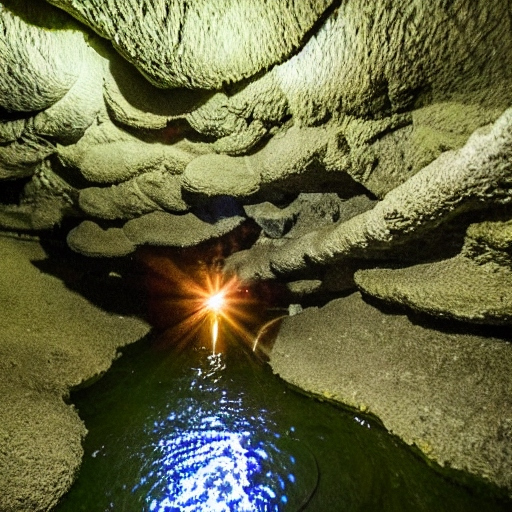
Embark on a magical journey through the Waitomo Glowworm Caves on the North Island. Marvel at the luminescent glowworms illuminating the dark caverns, creating a surreal and enchanting underground experience unlike any other.
Journey into the enchanting underworld of New Zealand at the Waitomo Glowworm Caves, where nature unveils a subterranean spectacle that captivates the imagination. Nestled on the North Island, this natural wonder is illuminated by the soft, ethereal glow of thousands of tiny glowworms, creating a mesmerizing display that turns the dark caverns into a celestial masterpiece. Boarding a boat, visitors glide through the underground river, witnessing the luminescent constellations created by these bioluminescent creatures.
The captivating beauty of the illuminated ceiling, resembling a starry night, evokes a sense of awe and wonder.10 Best Travelling Places in New Zealand
The Magic of Glowworms
What exactly are these little glowworms? Well, glowworms are actually the larvae of a species of fungus gnat. They emit a soft, blue-green light, creating an otherworldly glow in the cave’s dark interior. Their bioluminescence is used to attract prey, making the caves’ ceilings look like a starlit night sky.
History of the Waitomo Glowworm Caves
The caves have been a hidden gem for centuries, first discovered by local Maori people. In the late 19th century, they were explored by English surveyor Fred Mace and local Maori chief Tane Tinorau. Their exploration revealed the breathtaking beauty of the caves, and soon after, the site became a popular tourist destination.
The Cave System
The Waitomo Glowworm Caves are part of a vast cave system that includes several notable chambers and formations. These caves are formed from limestone and feature intricate stalactites and stalagmites that have taken millions of years to develop.
The Glowworm Grotto
One of the most spectacular parts of the cave system is the Glowworm Grotto. Here, visitors can take a boat ride through the underground river, marveling at the thousands of glowworms that illuminate the cave walls. It’s a serene, almost mystical experience that feels like drifting through a galaxy.
Aranui Cave
Not far from the Glowworm Grotto is the Aranui Cave. This dry cave is renowned for its stunning stalactites and stalagmites. The formations here are among the most intricate and beautiful in the Waitomo region, making Aranui a must-see.
Ruakuri Cave
Ruakuri Cave, also known as the “Den of Dogs,” is another gem in the Waitomo area. This cave is notable for its accessibility, featuring a spiral entrance and well-lit walkways that make it easy to explore. Guided tours offer insights into the cave’s unique features and rich history.
Visitor Experience
When visiting the Waitomo Glowworm Caves, guided tours are the way to go. Knowledgeable guides lead you through the cave system, sharing fascinating details about the geology, history, and biology of the area. Make sure to wear comfortable shoes and bring a light jacket, as the caves can be cool and damp.
The Science Behind the Glow
So, why do glowworms glow? The magic lies in bioluminescence, a chemical reaction that occurs in the glowworm’s body. This light is produced to attract insects, which the glowworms then capture with their sticky silk threads. It’s nature’s version of a fishing lure!
Conservation Efforts
Conserving the delicate ecosystem of the Waitomo Glowworm Caves is crucial. Efforts are in place to protect the glowworms and their habitat, ensuring that future generations can enjoy this natural wonder. Sustainable tourism practices are encouraged, and visitors are asked to respect the fragile environment.
Cultural Significance
The Waitomo Glowworm Caves hold deep cultural significance for the Maori people. According to Maori legend, the caves are home to the spirits of ancestors. This connection to the past adds a layer of spiritual depth to the natural beauty of the caves.
Activities and Attractions Nearby
Waitomo isn’t just about the glowworm caves. The area offers a plethora of activities and attractions. From black water rafting in the underground rivers to exploring the nearby Marokopa Falls and Mangapohue Natural Bridge, there’s plenty to see and do. Outdoor enthusiasts will also enjoy the hiking and caving adventures available in the region.
How to Get There
Reaching Waitomo Glowworm Caves is easy. The caves are a two-hour drive from Auckland and about an hour from Hamilton. Public transportation options include buses and tours that can take you directly to the site. The best time to visit is during the shoulder seasons of spring and autumn when the weather is mild and the crowds are smaller.
Accommodation and Facilities
Waitomo offers a range of accommodation options to suit every budget. From cozy bed and breakfasts to luxurious lodges, there’s something for everyone. The nearby village of Waitomo provides dining options and other amenities to make your stay comfortable
7. Tongariro National Park: Volcanic Marvels and Alpine Adventures :
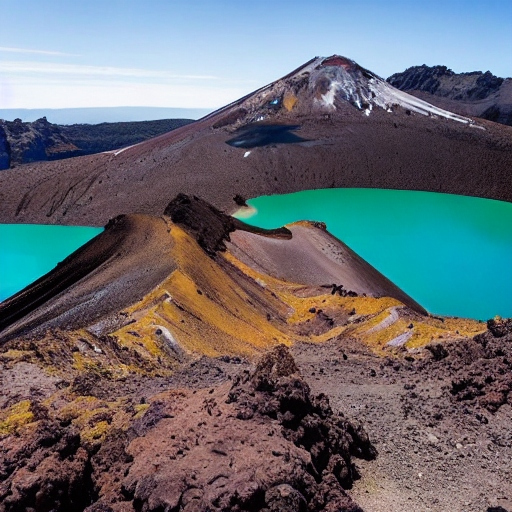
A UNESCO World Heritage Site, Tongariro National Park on the North Island offers a unique blend of volcanic landscapes and challenging hikes. The Tongariro Alpine Crossing takes you through emerald lakes, ancient lava flows, and active volcanic craters, providing an immersive encounter with the raw beauty of New Zealand’s wilderness .Recognized as a UNESCO World Heritage Site, Tongariro National Park features volcanic landscapes and the challenging Tongariro Alpine Crossing.10 Best Travelling Places in New Zealand
The North Island, Tongariro National Park stands as a testament to New Zealand’s geological wonders and natural beauty. This UNESCO World Heritage Site encompasses a unique blend of volcanic marvels and alpine adventures, making it a must-visit destination for nature enthusiasts.
Historical Significance
Tongariro National Park holds immense cultural and historical significance. It was the first national park in New Zealand, gifted by the Maori chief Te Heuheu Tukino IV in 1887 to preserve its sacred lands. The park is intertwined with Maori legends and traditions, making it not just a natural wonder but also a cultural treasure.
The Volcanic Landscape
The park’s landscape is dominated by three active volcanoes: Mount Ruapehu, Mount Ngauruhoe, and Mount Tongariro. These majestic peaks offer a glimpse into the Earth’s fiery core and showcase the geological forces that have shaped our planet.
Mount Ruapehu
Mount Ruapehu, the highest peak in the North Island, is a hub for winter sports. With its snowy slopes and well-developed ski fields, it’s a paradise for skiers and snowboarders. In the summer, the mountain transforms into a hiking and climbing destination, with stunning views from its summit.
Mount Ngauruhoe
Known to many as Mount Doom from “The Lord of the Rings,” Mount Ngauruhoe is an iconic volcanic cone. Its symmetrical shape and dramatic profile make it a favorite among photographers and hikers. The challenging climb to its summit is rewarded with breathtaking panoramic views.
Mount Tongariro
Mount Tongariro offers a diverse range of landscapes, from lush forests to barren volcanic craters. It’s home to the famous Tongariro Alpine Crossing, one of the best day hikes in the world, attracting thousands of adventurers each year.
Hiking and Trekking Adventures
Tongariro National Park is a hiker’s paradise, with trails ranging from short walks to multi-day treks. The diverse terrain ensures there’s something for everyone, from casual strollers to seasoned trekkers. Safety is paramount, so always check weather conditions and come prepared.
Tongariro Alpine Crossing
The Tongariro Alpine Crossing is the crown jewel of the park’s hiking trails. This 19.4-kilometer trek takes you through dramatic volcanic landscapes, past emerald lakes, and over rugged terrain. The trail is challenging but immensely rewarding, offering some of the best views in New Zealand.
Other Notable Hikes
Beyond the Alpine Crossing, Tongariro boasts several other stunning hikes. The Tama Lakes trail takes you to two beautiful crater lakes, while the Taranaki Falls walk offers an easy trek to a picturesque waterfall. Both hikes provide unique perspectives on the park’s diverse environment.
Flora and Fauna
Tongariro’s flora and fauna are as diverse as its landscapes. The park is home to unique plant species adapted to the harsh volcanic environment, such as alpine herbs and tussock grasses. Wildlife enthusiasts might spot native birds like the North Island robin, the kaka, and even the elusive kiwi.
Conservation Efforts
Preserving Tongariro’s pristine environment is a top priority. Conservation efforts focus on protecting native species, controlling invasive plants, and maintaining the natural beauty of the park. Local communities play a crucial role, working alongside conservationists to ensure the park remains a haven for future generations.
Cultural Experiences
Experiencing Tongariro’s cultural heritage is a highlight for many visitors. Maori traditions are deeply embedded in the park, and cultural tours offer insights into the stories and legends that make Tongariro so special. From guided walks to storytelling sessions, these experiences enrich your visit and deepen your understanding of the land.
Activities for Adventure Seekers
For those seeking an adrenaline rush, Tongariro National Park delivers. Besides hiking, the park offers activities like white water rafting on the Tongariro River and kayaking on its lakes. In winter, the ski slopes of Mount Ruapehu come alive, drawing snow enthusiasts from near and far.
How to Get There
Getting to Tongariro National Park is straightforward. It’s a four-hour drive from Auckland or Wellington, with regular bus services available from major cities. The best times to visit are spring (September to November) and autumn (March to May) when the weather is mild and the trails are less crowded.
Accommodation and Facilities
Whether you prefer camping under the stars or staying in a cozy lodge, Tongariro has accommodation options to suit every taste. The nearby villages of Whakapapa and National Park Village offer a range of lodgings, from budget-friendly hostels to luxurious retreats. Dining options are also plentiful, ensuring you’re well-fed for your adventures.
8. Hobbiton: Step Into Middle-Earth :
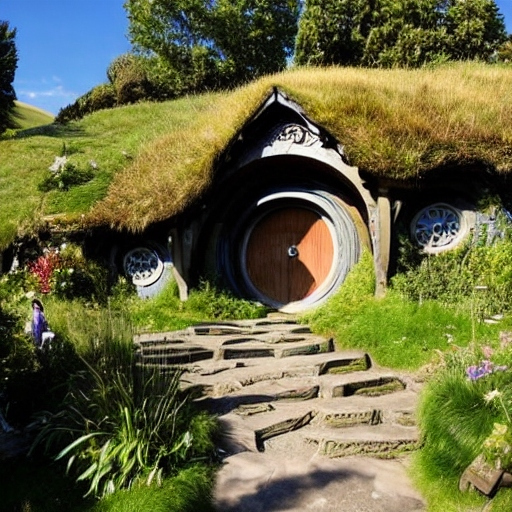
For fans of “The Lord of the Rings” and “The Hobbit,” a visit to Hobbiton near Matamata is a must. Explore the meticulously crafted movie set, complete with charming hobbit holes, the Green Dragon Inn, and immerse yourself in the enchanting world. Near Matamata, Hobbiton invites fans of “The Lord of the Rings” and “The Hobbit” to explore the movie set. Charming hobbit holes, the Green Dragon Inn, and meticulous details transport visitors into the enchanting world created by J.R.R. Tolkien.
Hobbiton, nestled near Matamata on the North Island of New Zealand, is a fantastical realm that allows visitors to step into the enchanting world of Middle-Earth.
This meticulously crafted movie set, featured in “The Lord of the Rings” and “The Hobbit” trilogies, immerses fans and curious travelers alike in the charming universe created by J.R.R. Tolkien. As you explore the lush landscapes dotted with hobbit holes, each with its unique character and design, the authenticity of Hobbiton brings the magic of the films to life.10 Best Travelling Places in New Zealand.
Ever dreamt of stepping into a storybook world? Welcome to Hobbiton, where fantasy becomes reality. Nestled in the heart of New Zealand, this enchanting village is a must-visit for fans of “The Lord of the Rings” and “The Hobbit.” Here, you can walk the same paths as Frodo and Bilbo Baggins, immersing yourself in the magic of Middle-Earth.
The History of Hobbiton
Hobbiton was created for Peter Jackson’s “The Lord of the Rings” trilogy. Originally, the set was a temporary structure, meant to be dismantled after filming. However, due to its immense popularity, it was transformed into a permanent attraction in 2011. Today, Hobbiton stands as a testament to the enduring appeal of Tolkien’s world.
The Setting of Hobbiton
Hobbiton captures the idyllic charm of the Shire, with its rolling green hills, quaint hobbit holes, and peaceful atmosphere. Located near the town of Matamata on New Zealand’s North Island, this picturesque landscape was handpicked for its striking resemblance to Tolkien’s descriptions.
Matamata: The Heart of Hobbiton
Matamata serves as the gateway to Hobbiton. This charming town is well-equipped to handle the influx of tourists, offering a variety of accommodations, restaurants, and shops. It’s easily accessible by car or bus, with regular tours departing from major cities like Auckland and Rotorua.
Exploring Hobbiton
A visit to Hobbiton is incomplete without a guided tour. These tours take you through the heart of the Shire, offering an insider’s view of the movie magic. From the lush gardens to the iconic hobbit holes, every detail is designed to transport you into Tolkien’s world.
The Green Dragon Inn
One of the highlights of any Hobbiton tour is the Green Dragon Inn. Here, you can sample a pint of specially brewed ale, cider, or ginger beer, all while soaking in the cozy ambiance of this iconic pub. It’s the perfect place to relax and relive your favorite scenes from the films.
The Party Tree
The Party Tree is another must-see spot in Hobbiton. This majestic tree played a central role in Bilbo’s birthday party in “The Fellowship of the Ring.” Today, it serves as a picturesque backdrop for events and photo opportunities.
Hobbit Holes
The hobbit holes of Hobbiton are perhaps its most iconic feature. Each one is uniquely designed, with colorful doors and charming details that make for perfect photo ops. You can’t help but feel like a hobbit as you wander among these whimsical homes.
Behind the Scenes
For movie buffs, the behind-the-scenes stories are a treasure trove of fascinating details. Learn about the set construction, the challenges faced during filming, and the incredible efforts that went into bringing Middle-Earth to life. These insights add a deeper appreciation for the magic of Hobbiton.
The Magic of the Movies
Hobbiton is a testament to the power of imagination and creativity. From the meticulous set design to the seamless special effects, every aspect of Hobbiton was crafted to create an immersive experience. Walking through the set, you can almost hear the echoes of the epic adventures that took place here.
Seasonal Events and Festivals
Hobbiton hosts a variety of seasonal events and festivals, each adding a unique twist to the experience. From the Mid-Winter Feast to the Summer Harvest Festival, these events celebrate the rich culture and traditions of the Shire. Check the event calendar to plan your visit around these special occasions.
Local Flora and Fauna
Hobbiton’s lush landscape is home to a variety of plants and wildlife. The gardens are filled with vibrant flowers, while the surrounding countryside offers a glimpse of native New Zealand flora and fauna. Keep an eye out for birds and other wildlife as you explore.
Visitor Tips and Recommendations
To make the most of your visit, it’s important to come prepared. Wear comfortable shoes, as the tour involves a fair amount of walking. Bring a hat and sunscreen if you’re visiting in the summer, and don’t forget your camera to capture the magic.
Accommodation Options
There are plenty of accommodation options in and around Matamata to suit all budgets. From cozy bed and breakfasts to luxurious lodges, you’ll find a place to rest your head after a day of adventure. Some accommodations even offer special Hobbiton packages, including tour tickets and meals.
How to Get There
Hobbiton is conveniently located near Matamata, making it easy to reach by car or bus. If you’re driving, follow the signs to Matamata from Auckland or Rotorua. There are also guided tours that include transportation, providing a hassle-free way to visit
9. Kaikoura: Marine Wonders and Coastal Beauty :
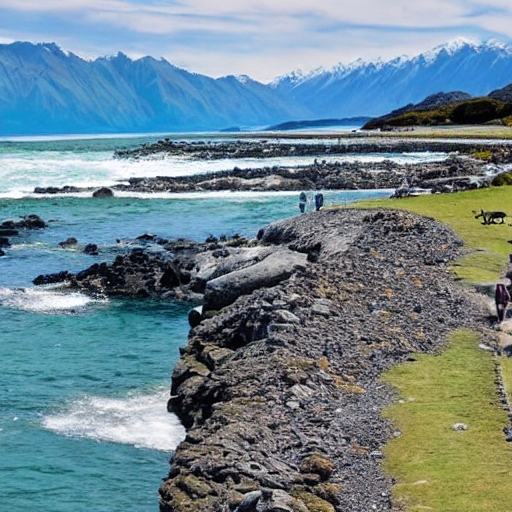
The rugged eastern coast of the South Island, Kaikoura is a captivating destination that seamlessly blends marine wonders with unparalleled coastal beauty. Renowned for its breathtaking landscapes, this coastal town invites travelers to witness a symphony of natural marvels.
The star attraction lies offshore, where whale-watching tours offer a chance to encounter majestic sperm whales, the ocean’s gentle giants, in their natural habitat. As if choreographed by nature, playful seals and dolphins frolic along the rugged coastline, adding to the marine spectacle.
Against a backdrop of snow-capped mountains and pristine waters, Kaikoura stands as a haven for wildlife enthusiasts and those seeking a serene escape.
Beyond the marine wonders, the town itself exudes a relaxed charm, inviting exploration of local eateries serving freshly caught seafood and providing a perfect vantage point to soak in the coastal beauty that defines Kaikoura’s allure.
10. Dunedin and Otago Peninsula: History, Wildlife, and Unique Charm :
Discover the Scottish heritage of Dunedin on the South Island, with its historic architecture and vibrant cultural scene. The nearby Otago Peninsula beckons with opportunities to observe albatross, penguins, and seals in their natural habitats. Dunedin on the South Island, with its Scottish heritage, showcases historic architecture and a lively cultural scene. The nearby Otago Peninsula offers opportunities to observe albatross, penguins, and seals in their natural habitats, creating a unique blend of history and wildlife.
Steeped in Scottish heritage, Dunedin’s historic architecture and vibrant cultural scene offer a glimpse into the past, with notable landmarks like the iconic Larnach Castle and the world’s steepest street, Baldwin Street.10 Best Travelling Places in New Zealand
Venturing to the nearby Otago Peninsula unveils a haven for wildlife enthusiasts. Here, albatross soar overhead, penguins waddle along the shores, and seals bask on rocky outcrops. The Royal Albatross Centre provides a fascinating insight into the lives of these majestic birds. This region’s allure lies in its ability to seamlessly merge historical richness with the untamed beauty of its natural surroundings, creating an enchanting destination that appeals to both history buffs and nature lovers alike.
Also Read : 10 best places for Solo travelling in Canada
Conclusion:
New Zealand’s diverse landscapes, rich cultural heritage, and thrilling adventures make it a must-visit destination for every traveler. Whether you seek the tranquility of nature, the excitement of adventure, or a cultural immersion, the 10 best traveling places in New Zealand offer a tapestry of experiences that will leave you enchanted and inspired. So, pack your bags and get ready for the journey of a lifetime in Zealand’s 10 best traveling places promise an extraordinary journey filled with natural wonders, cultural richness, and thrilling adventures. Whether you’re seeking the tranquility of coastal paradises, the excitement of adventure sports, or a cultural immersion, Aotearoa beckons with open arms, inviting you to explore its diverse landscapes and create memories that will last a lifetime.
FAQs :
A. Is New Zealand safe for travelers?
New Zealand is considered one of the safest travel destinations in the world, with low crime rates and welcoming locals. However, it’s always advisable to take standard safety precautions while traveling.
B. What is the best time to visit New Zealand?
The best time to visit New Zealand is during the shoulder seasons of spring (September to November) and fall (March to May) when the weather is mild, crowds are fewer, and nature is at its best.
C. How can I travel responsibly in New Zealand?
To travel responsibly in New Zealand, support local businesses, respect the environment, follow designated trails, and engage with indigenous cultures with respect and awareness.
Embark on your journey to New Zealand and discover the magic of this captivating country. Happy travels!


